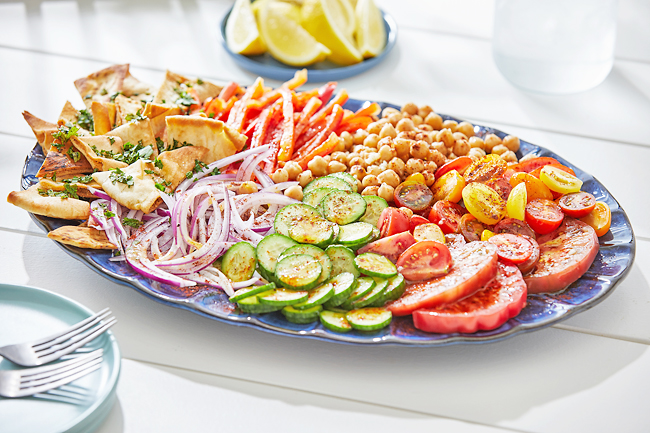Joe Yonan
THE WASHINGTON POST – Language evolves, and so do recipes. This one provides an example of both.
When making it – and even more so, when writing about it – I kept thinking about an old friend, a former copy editor colleague who, like many of us, is perhaps a touch pedantic.
I was thinking particularly about how anytime food writers at our publication would describe the restaurant trend of reworking a dish into its separate components, he would go on a rant if they dared to use the word “deconstruct”, or any of its forms.
Deconstruction should apply only to the specific form of literary and philosophical analysis that takes the name, he argued, not simply to the idea of breaking anything into its parts.
As much as I like to uphold some traditional ideas about language – don’t get me started on “literally”, for example – I never bought this one.
Perhaps it’s because I never studied literary or philosophical analysis in the same way he did, but I never understood the harm of the more informal usage. More importantly, I could never come up with a better term to quickly convey to most readers (especially those without philosophy degrees) that, say, a pastry chef was playing with form by presenting separate dollops of lemon curd, marshmallow cream and shortbread as “lemon meringue pie”.
Anyway, no offense, John, but the recipe I’m excited about this week is a deconstructed fattoush, the Middle Eastern bread salad.

FATTOUSH PLATTER
Total time: 35 minutes. Six to eight servings. (makes 12 cups)
This is a deconstructed version of the Middle Eastern tomato/bread salad, turning it into a platter full of elements perfect for a serve-yourself approach at a dinner party.
You can get as artful or as casual as you’d like with the presentation, letting guests choose their favourite parts and create their perfect bites.
Make Ahead: The pita chips can be made and stored in an airtight container at room temperature for up to five days before making the platter.
Storage Notes: Refrigerate for up to five days, preferably with the pitas and dressing kept separate from the rest of the salad.
Where to Buy: Sumac can be found in Mediterranean, Middle Eastern and international grocers, as well as online.
INGREDIENTS FOR THE SALAD
– Half cup extra-virgin olive oil
– Quarter cup fresh lemon juice
– Three cloves garlic, finely grated or pressed
– Half teaspoon fine salt
– Quarter teaspoon freshly ground black pepper
– Two-and-a-half pounds fresh tomatoes, preferably a mix of shapes, sizes and colours, cored if needed and cut into rounds and/or wedges
– Three to four small cucumbers, sliced
– One red bell pepper, stemmed, cored and sliced
– One can of no-salt-added chickpeas, drained and rinsed (or one-and-a-half cups cooked chickpeas)
– Half medium red onion, finely sliced
– One teaspoon ground sumac (may substitute za’atar spice blend)
– One tablespoon chopped fresh flat-leaf parsley
– One tablespoon chopped fresh mint
FOR THE CRISPY PITA
– Four small pita pockets or two large pita breads, cut into triangles
– Two tablespoons extra-virgin olive oil
DIRECTIONS
Position a rack in the middle of the oven and preheat to 450 degrees.
Make the salad: In a small bowl, whisk together the olive oil, lemon juice, garlic, salt and pepper until combined. Taste, and season with more salt and/or pepper as needed.
On a large serving platter, arrange the tomatoes and cucumbers. Top with the bell pepper, chickpeas and onion. Sprinkle with the sumac and drizzle with a quarter cup of the dressing.
Make the crispy pita: While the salad sits and the flavours meld, on a large, rimmed baking sheet, toss the pita triangles with the olive oil and spread them out. Toast for about 10 minutes, turning as needed, until golden brown and crisp. Arrange the pita triangles on the platter. Sprinkle with the herbs and serve with lemon wedges and the remaining dressing.






